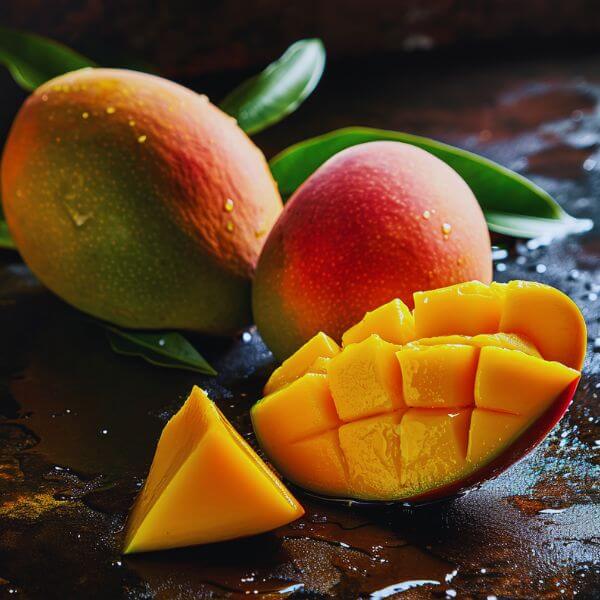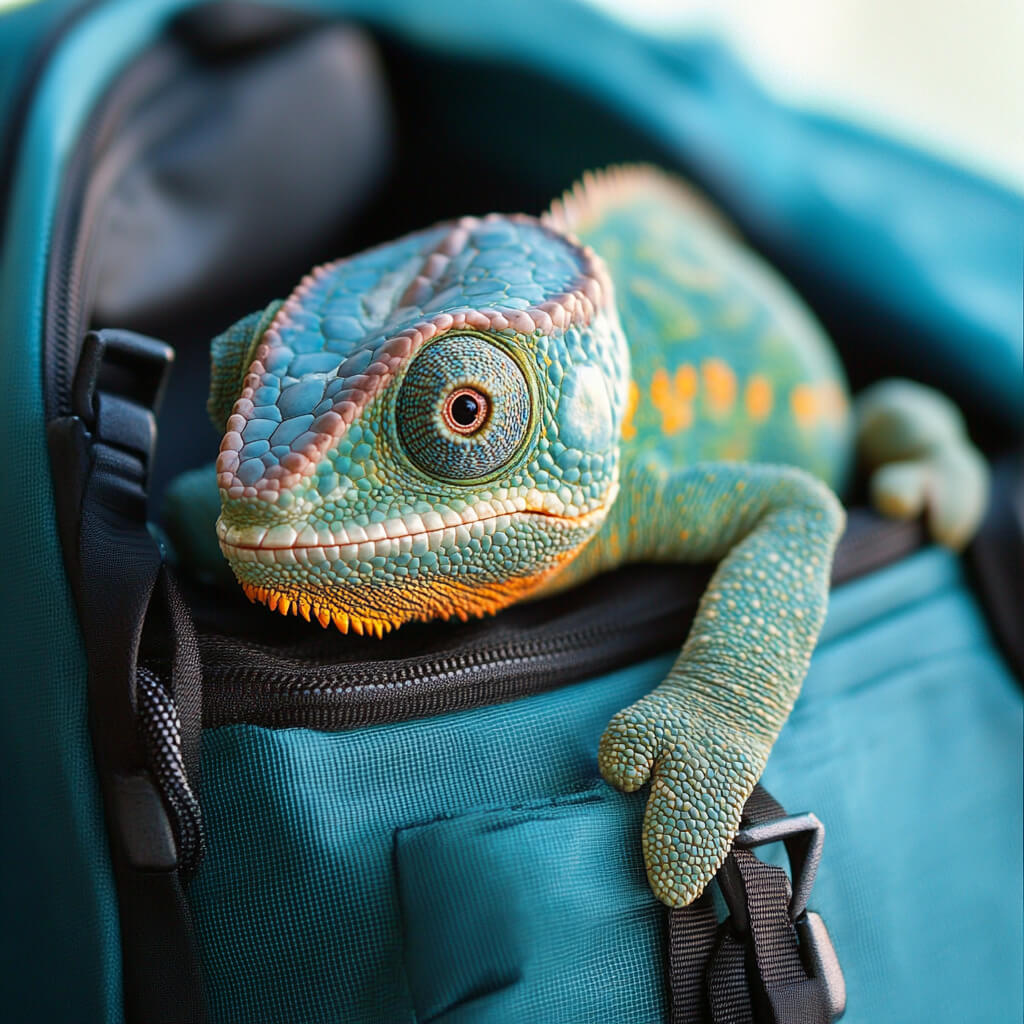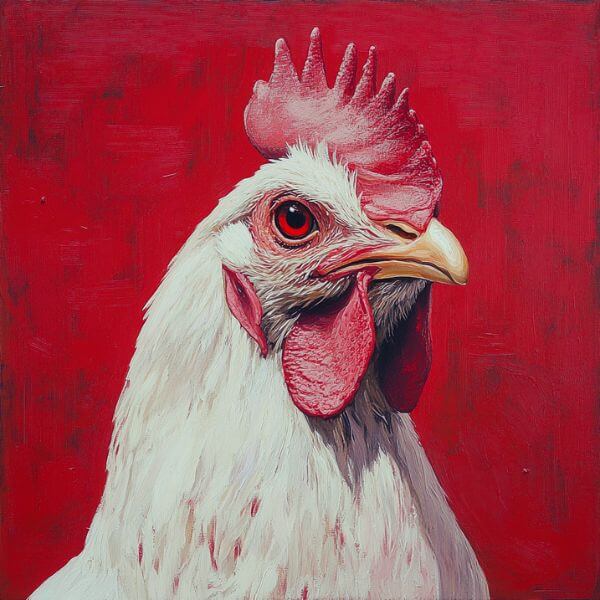Yes, chameleons can eat mango, but with a big “BUT” attached.
While mangoes aren’t toxic to chameleons, they shouldn’t be a main part of their diet.
Think of mango as a special treat for your scaly friend, not an everyday snack.
Here’s a quick rundown of the mango situation:
| Mango for Chameleons | The Scoop |
| Is it safe? | Yes, in small amounts |
| How often? | Occasional treat only |
| Main benefit | Adds variety to diet |
| Main concern | High sugar content |
Mangoes can offer some nutrients that are good for chameleons, like:
- Vitamin A (good for eye health)
- Vitamin C (boosts immune system)
- Water content (helps with hydration)
But remember, chameleons in the wild don’t usually munch on mangoes.
Their natural diet is mostly insects, with a side of leaves and flowers.
So while a bit of mango won’t hurt, it shouldn’t replace the foods your chameleon really needs.
Potential risks of feeding mango to chameleons
Now, let’s talk about the not-so-sweet side of feeding mangoes to chameleons. There are a few risks to keep in mind:
- Sugar overload: Mangoes are nature’s candy, packed with natural sugars. While that’s yummy for us, it can be too much for a chameleon’s system. Too much sugar can lead to obesity and other health issues.
- Tummy troubles: Chameleons have sensitive digestive systems. The high fiber in mangoes might be hard for them to process, potentially causing upset stomachs or diarrhea.
- Nutritional imbalance: If your chameleon fills up on mango, they might not eat enough of the insects and leafy greens they really need. This could lead to nutritional deficiencies over time.
- Pesticide problems: If the mango isn’t organic, it might contain pesticides that could harm your chameleon. Always wash fruits thoroughly!
Remember, it’s always better to be safe than sorry when it comes to your scaly friend’s diet. When in doubt, stick to their regular, chameleon-approved foods.
How to safely feed mango to your chameleon
If you’ve decided to give your chameleon a little mango treat, here’s how to do it safely:
- Prep it right: Wash the mango thoroughly. Peel it and remove the pit. Cut it into tiny, chameleon-sized bites.
- Size matters: A piece of mango should be no larger than the space between your chameleon’s eyes. That’s their “bite-size”!
- Moderation is key: Offer mango as an occasional treat, not more than once or twice a month.
- Watch and learn: After giving mango, observe your chameleon for any signs of discomfort or digestive issues.
Here’s a handy chart to help you remember:
| Do’s | Don’ts |
| Wash thoroughly | Don’t leave mango in the enclosure for more than a few hours |
| Cut into tiny pieces | Don’t feed mango seeds or skin |
| Offer as an occasional treat | Don’t make mango a regular part of the diet |
| Observe after feeding | Don’t force-feed if your chameleon isn’t interested |
Nutritional value of mango for chameleons
Let’s break down what’s inside a mango and see how it stacks up for chameleons:
| Nutrient | Benefit for Chameleons | Amount in 100g Mango |
| Vitamin A | Good for eye health and skin | 54 µg |
| Vitamin C | Boosts immune system | 36.4 mg |
| Potassium | Helps with muscle function | 168 mg |
| Fiber | Aids digestion (in small amounts) | 1.6 g |
| Water | Helps with hydration | 83.5 g |
While these nutrients can be beneficial, remember that chameleons get most of what they need from a diet of insects and leafy greens.
Mango should only be a small addition to a balanced chameleon diet, not a main component.
Alternatives to mango in a chameleon’s diet
If you’re looking to add some variety to your chameleon’s diet, there are plenty of options besides mango.
Here are some chameleon-friendly fruits and veggies:
| Fruits | Vegetables | Leafy Greens |
| Papaya | Bell peppers | Collard greens |
| Figs | Squash | Mustard greens |
| Berries | Carrots | Dandelion greens |
| Apples | Sweet potato | Kale |
Remember, fruits and veggies should make up only about 10-15% of your chameleon’s diet.
The rest should be insects like crickets, roaches, and worms. Yum, right? (Well, for a chameleon, anyway!)
Best practices for feeding pet chameleons
Feeding a chameleon isn’t just about what you give them, but how you do it. Here are some tips to keep your colorful friend happy and healthy:
- Variety is the spice of life: Mix up your chameleon’s diet. Different insects, different greens, and yes, the occasional fruit treat.
- Timing is everything: Most chameleons prefer to eat in the morning. It’s when they’re most active and ready to hunt.
- Make them work for it: In the wild, chameleons hunt for their food. Try using a feeding cup or placing insects around the enclosure to encourage natural behavior.
- Size matters: Food items should be no larger than the space between your chameleon’s eyes.
- Hydration station: Chameleons often prefer to drink water droplets. Mist their enclosure regularly or use a dripper system.
- Supplement smartly: Use calcium and vitamin supplements as recommended by your vet.
- Watch and learn: Observe your chameleon’s eating habits. If they’re not interested in food or seem lethargic, it might be time for a vet visit.
Remember, every chameleon is unique. What works for one might not work for another. It’s all about getting to know your scaly friend and their preferences!
FAQs about chameleons and mango
How often can I feed my chameleon mango?
Not more than once or twice a month. Mango should be an occasional treat, not a regular part of their diet.
Can baby chameleons eat mango?
It’s best to avoid giving mango to baby chameleons. Their digestive systems are extra sensitive, and they need a diet focused on insects for proper growth.
What signs indicate my chameleon isn’t tolerating mango well?
Watch for signs like diarrhea, lethargy, or loss of appetite. If you notice any of these after feeding mango, stop offering it and consult your vet.
Are there any parts of the mango I should avoid giving my chameleon?
Yes! Always remove the skin and pit. Only offer the soft, ripe flesh of the mango.
Can mango replace insects in a chameleon’s diet?
Absolutely not! Insects should make up the majority of your chameleon’s diet. Mango is just a sometimes-treat.
Conclusion
So, there you have it! Chameleons can eat mango, but it should be a special treat, not an everyday snack.
Remember, a balanced chameleon diet is key to keeping your colorful friend healthy and happy.
Here’s a quick recap:
- Mango is safe in small amounts
- It’s high in sugar, so moderation is crucial
- Proper mango preparation is important
- Insects and leafy greens should still be the main part of your chameleon’s diet
Every chameleon is unique, so what works for one might not work for another.
When in doubt, always check with your vet. They’re the experts who can give you personalized advice for your scaly buddy.
Remember, taking care of a chameleon is an adventure!
Keep learning, stay curious, and enjoy the colorful journey with your chameleon friend. Happy feeding!







Leave a Reply